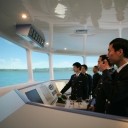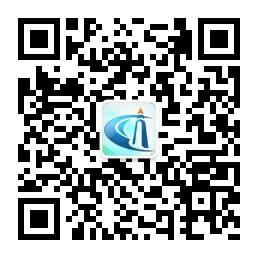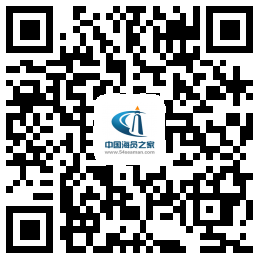STANDING ORDERS FOR BRIDGE WATCH OFFICERS
RELIEVING THE WATCH
○ Carefully read and sign the night orders.
○ Note and verify the ship's position on the chart.
○ Allow your eyes to adjust to the lighting conditions.
■ Do not relieve the watch until you know the existing situation. Obtain the following information from the officer you are relieving:
○ Watch Condition.
○ Vessels on radar, visible vessels, lights, whistles, bells, gongs or other sounds and the status of bearings or plots on them.
○ Visible land marks and land falls or navigational aids expected to be picked up.
○ Weather, wind, sea and forecasted weather.
○ Speed and revolutions vessel is making.
○ Course changes or other orders of Master.
○ Course being steered by standard magnetic compass and by gyrocompass.
○ Operational status of the radars and other navigational equipment.
○ Lookouts posted and their position (i.e. bow, starboard bridge wing, flying bridge, etc.)
○ Deck security, watertight integrity, tank and bilge soundings and condition of deck cargo and lashings.
○ Navigational lights are burning brightly during the hours of sunset to sunrise and during periods of reduced visibility.
○ Check communications systems to the engine room and lookout position.
○ Any other information you may need to understand the existing situation.
■ The watch is relieved when the words "I relieve you." are spoken. The relieving officer is then in charge.
■ Do not turn the watch over to your relief unless you are certain that he has a thorough understanding of the existing situation and is awake, sober and alert.
WATCHSTANDING CONDUCT
○ Turn the course recorder on, set it to the proper time when coasting, approaching sea-lanes or when visibility is restricted.
○ No signals of any nature shall be made to shore or other vessels without the Master's authority.
■ Closely watch the steering. Check compass error at least once every watch and on every course change. Check the ship's position frequently when coasting.
■ Always be alert. Check that helmsmen and lookouts are also alert, properly stationed and attentive to their duties.
CALL THE MASTER IMMEDIATELY
■ If you think the ship is setting in toward the land or a danger.
■ If you are in any doubt about the ship's position or the proper course to pursue.
○ If you change the course or speed to avoid immediate danger.
○ To report all signals, landfalls, lights, lightships, lighthouses, beacons, buoys, vessels, anything unusual sighted visually or by radar, and any marked change in weather, wind, sea or barometer.
■ To report any radio distress signals.
■ To report changes in navigational conditions including reduction of visibility or traffic increases.
DO NOT LEAVE THE BRIDGE UNATTENDED
○ Do not leave the bridge under any circumstances unless relieved by the Master or other licensed deck officer.
OBEY THE RULES OF THE ROAD
○ Always obey the rules of the road. Give meeting or crossing vessels plenty of room. Collision avoidance maneuvers should be substantial and should be taken early so that they can be readily observed and understood by other vessels in the vicinity.
CONDUCT IN RESTRICTED VISIBILITY AND DENSE TRAFFIC
○ Immediately start the fog signal when you are near or entering areas of restricted visibility.
○ When you are in or near areas of restricted visibility or areas of dense traffic (such as crowded fairways, and fisheries areas):
○ Send the lookout forward (safety permitting).
○ Put the engine on standby.
○ In areas of traffic or suspected traffic, reduce speed so that the vessel can stop within the visible distance.
○ Operate both radars.
○ Put helm in hand steering.
○ Immediately inform the Master of the situation and of your actions.
○ Adjust the watch condition.
RELIEVING THE WATCH
○ Carefully read and sign the night orders.
○ Note and verify the ship's position on the chart.
○ Allow your eyes to adjust to the lighting conditions.
■ Do not relieve the watch until you know the existing situation. Obtain the following information from the officer you are relieving:
○ Watch Condition.
○ Vessels on radar, visible vessels, lights, whistles, bells, gongs or other sounds and the status of bearings or plots on them.
○ Visible land marks and land falls or navigational aids expected to be picked up.
○ Weather, wind, sea and forecasted weather.
○ Speed and revolutions vessel is making.
○ Course changes or other orders of Master.
○ Course being steered by standard magnetic compass and by gyrocompass.
○ Operational status of the radars and other navigational equipment.
○ Lookouts posted and their position (i.e. bow, starboard bridge wing, flying bridge, etc.)
○ Deck security, watertight integrity, tank and bilge soundings and condition of deck cargo and lashings.
○ Navigational lights are burning brightly during the hours of sunset to sunrise and during periods of reduced visibility.
○ Check communications systems to the engine room and lookout position.
○ Any other information you may need to understand the existing situation.
■ The watch is relieved when the words "I relieve you." are spoken. The relieving officer is then in charge.
■ Do not turn the watch over to your relief unless you are certain that he has a thorough understanding of the existing situation and is awake, sober and alert.
WATCHSTANDING CONDUCT
○ Turn the course recorder on, set it to the proper time when coasting, approaching sea-lanes or when visibility is restricted.
○ No signals of any nature shall be made to shore or other vessels without the Master's authority.
■ Closely watch the steering. Check compass error at least once every watch and on every course change. Check the ship's position frequently when coasting.
■ Always be alert. Check that helmsmen and lookouts are also alert, properly stationed and attentive to their duties.
CALL THE MASTER IMMEDIATELY
■ If you think the ship is setting in toward the land or a danger.
■ If you are in any doubt about the ship's position or the proper course to pursue.
○ If you change the course or speed to avoid immediate danger.
○ To report all signals, landfalls, lights, lightships, lighthouses, beacons, buoys, vessels, anything unusual sighted visually or by radar, and any marked change in weather, wind, sea or barometer.
■ To report any radio distress signals.
■ To report changes in navigational conditions including reduction of visibility or traffic increases.
DO NOT LEAVE THE BRIDGE UNATTENDED
○ Do not leave the bridge under any circumstances unless relieved by the Master or other licensed deck officer.
OBEY THE RULES OF THE ROAD
○ Always obey the rules of the road. Give meeting or crossing vessels plenty of room. Collision avoidance maneuvers should be substantial and should be taken early so that they can be readily observed and understood by other vessels in the vicinity.
CONDUCT IN RESTRICTED VISIBILITY AND DENSE TRAFFIC
○ Immediately start the fog signal when you are near or entering areas of restricted visibility.
○ When you are in or near areas of restricted visibility or areas of dense traffic (such as crowded fairways, and fisheries areas):
○ Send the lookout forward (safety permitting).
○ Put the engine on standby.
○ In areas of traffic or suspected traffic, reduce speed so that the vessel can stop within the visible distance.
○ Operate both radars.
○ Put helm in hand steering.
○ Immediately inform the Master of the situation and of your actions.
○ Adjust the watch condition.
请登录后发帖

 联系我们人工客服
联系我们人工客服



















 :1391995811
:1391995811

